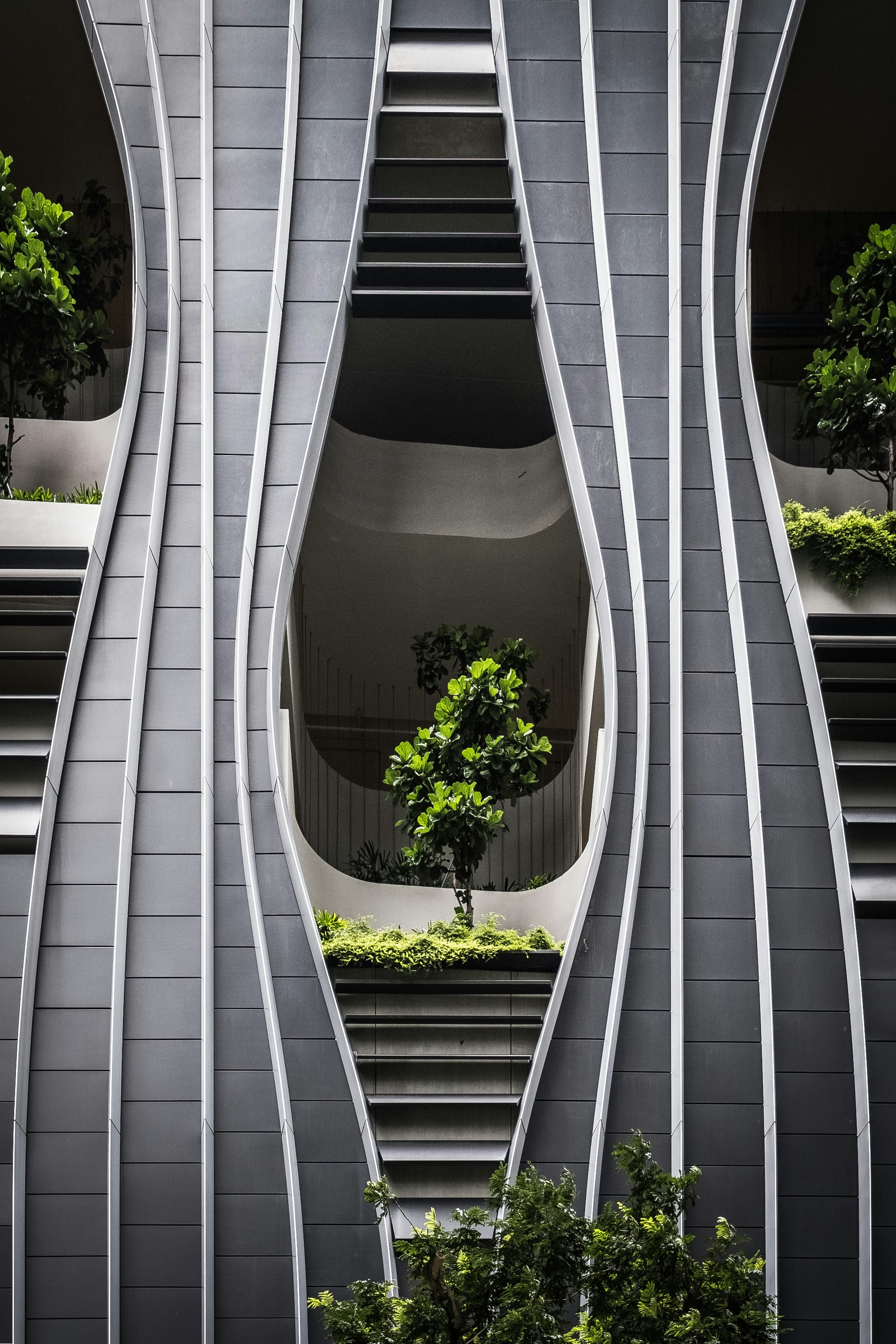Introduction to Parametric Architecture
Parametric architecture is an innovative approach to building design that leverages computational design tools and algorithms to create dynamic and adaptable structures. Unlike traditional architectural methods, which often rely on static forms and predefined measurements, parametric design is characterized by its flexibility, allowing architects to respond to varying conditions and requirements throughout the design process. This methodology enables the integration of complex variables, such as environmental factors, user needs, and material properties, into the design equation, resulting in more efficient and tailored solutions.
The essence of parametric architecture lies in the relationships established among design elements, which can be manipulated through parameters. By adjusting these parameters, architects can predict and evaluate how changes will affect the overall outcome, leading to a more systematic and informed design approach. This capability is especially significant in today’s rapidly evolving urban environments, where adaptability and sustainability are paramount. Advancements in technology have played a fundamental role in the rise of parametric architecture. The proliferation of sophisticated design software and tools has equipped architects with the means to visualize complex geometries and performance-driven designs. These tools not only enhance creativity but also improve collaboration among stakeholders during the design phase. Algorithms, for instance, can generate multiple iterations of a design, enabling architects to explore various possibilities and optimize their projects for functionality and aesthetic appeal.
This forward-thinking approach fosters a deeper integration between architecture and its surrounding environments by allowing for structures that can adapt and transform in response to context. With the increasing interest in sustainable practices and efficient resource management within the architecture field, the significance of parametric design continues to grow. Such innovative methodologies set the stage for leading firms like Soga Design Studio to redefine the architectural landscape in India through their commitment to adaptive designs and responsive architectures.
Soga Design Studio: A Brief Overview
Founded with a vision to revolutionize the architectural landscape in India, Soga Design Studio has established itself as a prominent player in the field of architecture and design. The studio was conceived by a group of forward-thinking architects who aimed to integrate modern design methodologies with traditional Indian values. This unique blend of influences has allowed Soga Design Studio to create innovative architectural solutions that are both aesthetically pleasing and environmentally conscious.
The mission of Soga Design Studio revolves around pushing the boundaries of conventional design by embracing parametric architecture. This approach is characterized by the use of advanced computational design techniques, which allows for the creation of complex forms and spaces that respond dynamically to various environmental factors. Through this lens, the studio emphasizes the importance of sustainability, ensuring that each project is not only visually impressive but also contributes positively to the surrounding ecosystem.
Key design philosophies at Soga Design Studio focus on collaboration, creativity, and contextual awareness. The team believes that effective communication with clients is essential to translating their visions into tangible outcomes. By fostering close client relationships, the studio is able to understand specific needs and aspirations, incorporating them seamlessly into the design process. This collaborative ethos has led to several notable projects, such as the eco-friendly office spaces and residential complexes that showcase innovative use of materials and energy-efficient solutions.
In the Indian architectural landscape, Soga Design Studio stands out for its commitment to integrating parametric design principles in a way that enhances functionality and sustainability. Their dedication to innovation not only reflects in the end product but also influences the larger discourse on responsible architectural practices within the country.
Case Studies of Parametric Projects by Soga Design Studio
Soga Design Studio has made significant strides in the field of parametric architecture in India, showcasing a diverse range of projects that exemplify innovation and creativity. This section outlines several case studies that underscore the studio’s design philosophy and technical prowess.
One notable project is the “Responsive Pavilion” located in Mumbai. This initiative aimed to create a space that adapts to its environment, effectively responding to various climatic conditions. Utilizing grasshopper software, the team developed a set of algorithms that informed the pavilion’s geometry, enabling it to maximize natural light while minimizing heat gain. Challenges included ensuring structural integrity while maintaining aesthetic appeal. The impact of the pavilion is notable, as it not only serves as a public gathering area but also enhances the natural landscape, blurring the lines between architecture and nature.
Another significant project is the “Cultural Hub” in Delhi, designed to foster community engagement. The primary objective was to create a multifunctional space while ensuring flexibility in its usage. Soga Design Studio employed parametric modeling techniques to optimize the layout, allowing for open spaces that can be easily transformed for various events. The project faced challenges related to site constraints and urban regulations; however, through careful planning and innovative use of materials, the hub now stands as a vibrant addition to the city. The integration of local art and elements reflects the cultural heritage while promoting social interaction.
Lastly, the “Green Facade” project in Bangalore highlights sustainability through its parametric design. Aiming to reduce energy consumption, this building features a dynamic facade that responds to the sun’s position throughout the day. The design team utilized advanced computational tools to simulate performance and visual effects, addressing challenges in environmental demands and aesthetic continuity. The project successfully combines functionality and visual appeal, contributing to Bangalore’s progressive urban landscape.
These case studies reveal Soga Design Studio’s commitment to pushing the boundaries of parametric architecture, ensuring that each project resonates with its environment while enhancing the user experience.
The Future of Parametric Architecture in India
The future of parametric architecture in India presents an exciting frontier marked by innovation, adaptability, and transformation. It is anticipated that as technology advances, the adoption of parametric design principles will become increasingly prominent in architectural practice. Current trends indicate a growing recognition of the need for contextualized, sustainable designs that respond effectively to the complexities of the Indian environment. This paradigm shift is powered by advancements in computational tools, which facilitate the creation of structures that are not only aesthetically pleasing but also efficient in terms of resource utilization.
Organizations such as Soga Design Studio are at the forefront of this evolution, effectively blending creativity with technology. Their vision for the future landscape of architecture emphasizes the importance of embracing digital design strategies that can cater to a diverse range of project requirements. As they continue to spearhead innovative projects, the studio positions itself to inspire a new generation of architects to explore the potential of parametric architecture. The integration of data and analytics into the design process enables architects to create responsive and resilient buildings tailored to their surroundings.
Nevertheless, this forward-looking approach is not without its challenges. One notable obstacle is the necessity for enhanced education and training within architectural institutions. To foster a robust understanding of parametric tools and methodologies, educational programs must be updated and aligned with technological advancements. This focus on education will empower graduate architects to leverage the capabilities of computational design and address contemporary architectural challenges creatively. Furthermore, by instilling a culture of innovation, emerging architects will play a crucial role in crafting the built environment, thereby contributing to a sustainable and dynamic future for parametric architecture in India.


